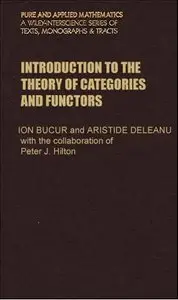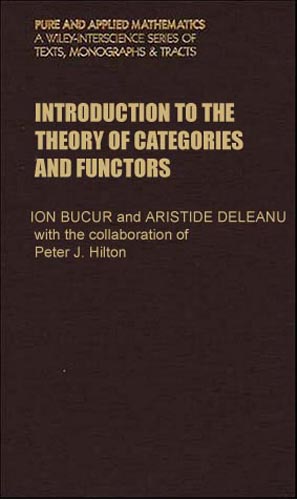I. Bucur, A. Deleanu, "Introduction to the Theory of Categories and Functions"
1968 | pages: 232 | ISBN: 047011651X | PDF | 13,3 mb
1968 | pages: 232 | ISBN: 047011651X | PDF | 13,3 mb
The theory of categories has arisen in the last twenty-five years and now constitutes an autonomous branch of mathematics. It owes its origin and early inspiration to developments in algebraic topology. When the basic concepts of category, functor, natural transformation and natural equivalence were first formulated by Eilenberg and MacLane they served immediately to provide the appropriate framework for describing the way in which algebraic tools were used, and could be used, in the study of topology. It was surely evident from the outset, to the inventors of these fundamental notions and to others, that their domain of application certainly extended far beyond that of algebraic topology. Indeed there were clearly many applications within algebra itself, and homological algebra began to emerge as a mathematical discipline in its own right concerned with abelian categories and their specializations to categories of modules. However, it was not clear in the early stages that there was a "pure" theory latent within the domain of categories and functors which was capable of assuming substantial proportions within the body of mathematics. Of course, the original basic concepts came to be reinforced by auxiliary notions suggested by applications of those concepts; and many arguments traditionally carried out in a more specialized setting were seen to fit naturally into the more abstract framework of category theory. Nevertheless, it is only in the last ten years, or less, that the source of inspiration for advances in category theory has come to any considerable extent from within the theory itself. Once this process had begun it accelerated rapidly, so that now the corpus of knowledge has increased enormously and with this advance has come a great increase in the scope of application of the theory, to include such widely scattered parts of mathematics as functional analysis and mathematical logic.
My Links



